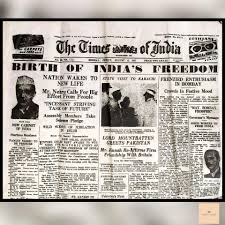
Introduction: The Role of Times of India in Journalism
The Times of India (TOI), established in 1838, has evolved into one of India’s leading English-language newspapers. With a daily circulation of over 3 million copies, TOI holds a significant position not only in India but also on the global stage. Its influence extends beyond journalism, shaping public opinion and discourse on various societal issues.
Historical Background and Evolution
The Times of India was first published as ‘The Bombay Times and Journal of Commerce’ and underwent various transformations over the decades. The newspaper gained popularity due to its comprehensive coverage of local and international news, becoming a respected source of information for millions of readers. Over time, TOI has adapted to the changing media landscape, shifting from print to digital platforms, thus reaching younger audiences through online editions and social media.
Current Events and Influence
In recent years, the Times of India has played a pivotal role in covering major national events, including elections, socio-political movements, and innovations in technology. Its investigative journalism has uncovered numerous issues, holding power accountable and sparking national debates. The newspaper’s comprehensive coverage during the COVID-19 pandemic provided vital information to the public, contributing to awareness and education on health measures.
The Times of India’s digital presence has also strengthened its position in the competitive media landscape. With over 24 million unique visitors to its website each month, TOI continues to innovate by providing news updates, lifestyle content, and personalized news feeds to engage a diverse readership. The integration of multimedia elements, such as videos and podcasts, has further enriched its content, appealing to various demographics, especially the youth.
Looking Forward: Challenges and Prospects
As the media landscape continues to change with the rise of social media and alternative news sources, the Times of India faces challenges in maintaining its credibility and trustworthiness among readers. The prevalence of misinformation and fake news demands a proactive approach in fact-checking and adhering to ethical journalism standards. TOI’s commitment to responsible journalism will be crucial in retaining its influence and relevance.
Conclusion: The Significance of Times of India
The Times of India remains a cornerstone of Indian journalism, with a profound impact on its audience. As it celebrates over 180 years of service, the newspaper’s adaptability and commitment to high-quality reporting ensure its continued significance in shaping the media landscape in India and serving the democratic framework. For readers, staying informed through credible sources like TOI is essential in an age where media influence is stronger than ever.



